Taino artwork richly unifies a wide variety of symbology from documented historical sites throughout the Caribbean.
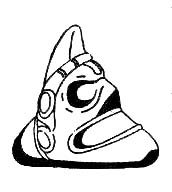 |
Trigonolito
Yocahu Vaguada Maorocoti: God of fertility. "Spirit of the Yucca and the sea. Mr yucador. " He was buried in the conucos cassava; main food of the native Taino, to fertilize the soil. |
| |
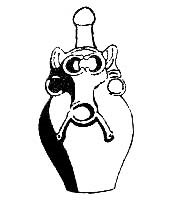 |
Potiza
Container used by the Aborigines of Quisqueyana to store water and fermenting the wine produced with the juice of Guáyiga. They were bought by women to men as a declaration of love |
| |
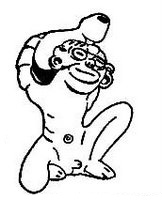 |
God of Labour
Recreation brothers Guillen, based on Taino art. The potiza carrying on his back, representing the hard work you were subjected aboriginal Americans as a result of conquest. |
| |
 |
Itiva Tahuvava
Goddess Mother Earth. Mother of twins representing the four cardinal points or "the four winds." |
| |
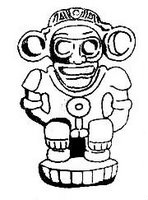 |
Behique
"Witch Doctor", Shaman. It represents the wisest character in the Taino tribe, knowing all the plants and medicinal substances responsible for curing diseases, director of the rite of cohoba. If left to a dying patient, the relatives of the dead killed clobbered. |
| |
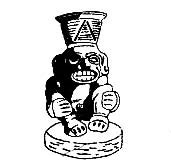 |
Cemi Boinayel
God of Rain. Large tears emerging from their eyes as a sign of water that will govern the field to fertilize the cultivation of cassava. |
| |
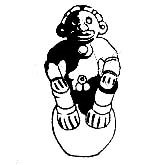 |
Majador
Hand mortar used for rituals in the spraying of the ingredients of cohoba (seeds, shells, leaves). |
| |
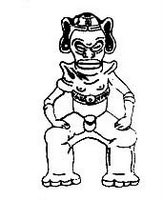 |
Dimivan Caracaracol
"Mr Roñoso." Unico child with the name of Mother Earth goddess. It represents a chieftain to which his brothers discovered a tumor, which operate and draw a turtle alive. |
| |
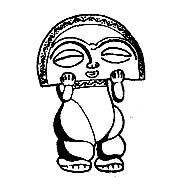 |
Moon Goddess
Sale of a cave of the country chieftain Mautiatibuel (son of dawn) or "Lord of the Dawn", which returns to hide, while the sun rises from there. |
| |
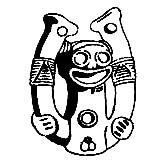 |
Maquetaurie Guava
Inhalers used by the Taino in the rite of cohoba for inhaling dust hallucinogen during the magical-religious ceremony. |
| |
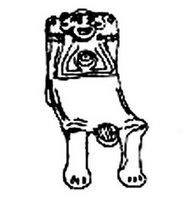 |
Duho
Ceremonial seat used by warlords to preside over the ceremonies and rituals. |
| |
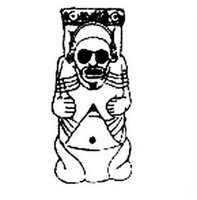 |
Totem
"God of Snuff." This figure was used as funerary urn for major characters and loved ones of the tribe. |
| |
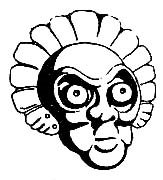 |
Sun God
Sale of a cave of the country's chief Mautiatibuel (son of dawn) or "Lord of the Dawn", which returns to hide, while the moon comes out of there. |
| |
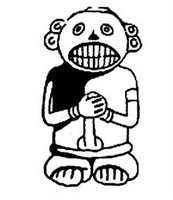 |
Cemi
It represents a god in the ceremonial position that took the chieftain or behique in the rite of cohoba. |
| |
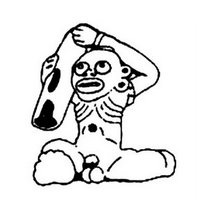 |
God of force
Recreation brothers Guillen, based on Taino art. The trunk that rose, represents the willpower of the people for being free. |
| |
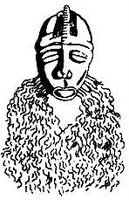 |
Mask
Representation of the face of characters and mystical animals or real world Taino. |
| |
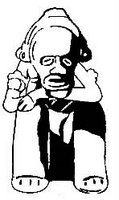 |
Glass Effigy
Glass antropomorfo sedentary, for his position, is known as the representation of "God's thinking." It was used to consume liquid at the ceremony of marriage. |
| |
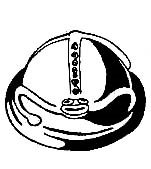 |
Seal or Rattle
Part representing toad or turtle with geometric design subsection, used to make prints on clothing or skin. |
| |
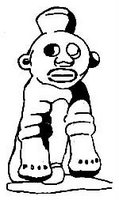 |
Opiyel Guobiran
God-dog, remained tied until the evening when it was released into the jungle. Its position suggests that it is ready to jump and escape to freedom. |
| |
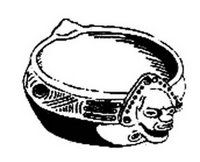 |
Olla
Vessel used in cooking and for ceremonial occasions. |
| |
 |
Cacique Marocael
Aboriginal that, according to mythology Taino, stand guard in a cave called cacibajagua; place where people came to populate the island. One day it took to reach his post and was turned into stone by the action of the sun. |
| |
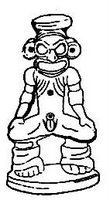 |
God of Cohoba
Main deity Taíno. The plate of his head was used to move the dust that was inhaled hallucinogen in ceremonies regligiosas (rite of cohoba). |
| |
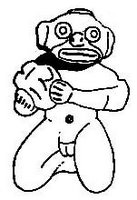 |
Abundance
Recreation brothers Guillen, based on Taino art. The container carrying in his hands is a symbol of prosperity and peace, which each man achieved as a result of work. |